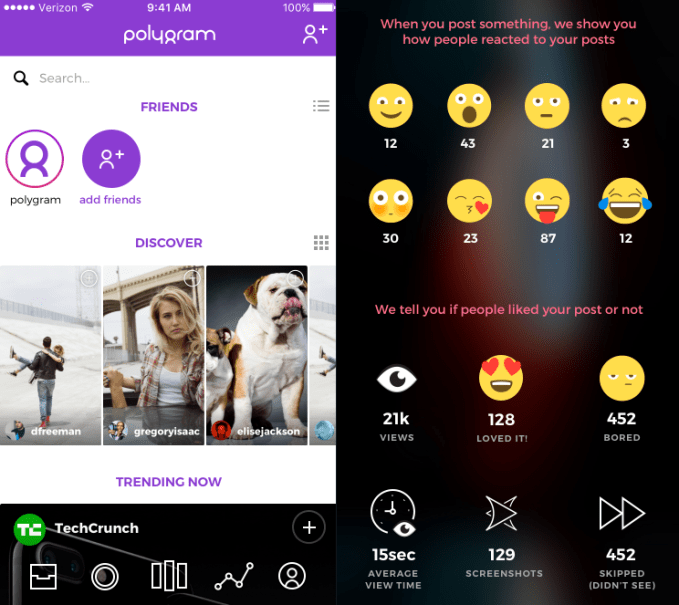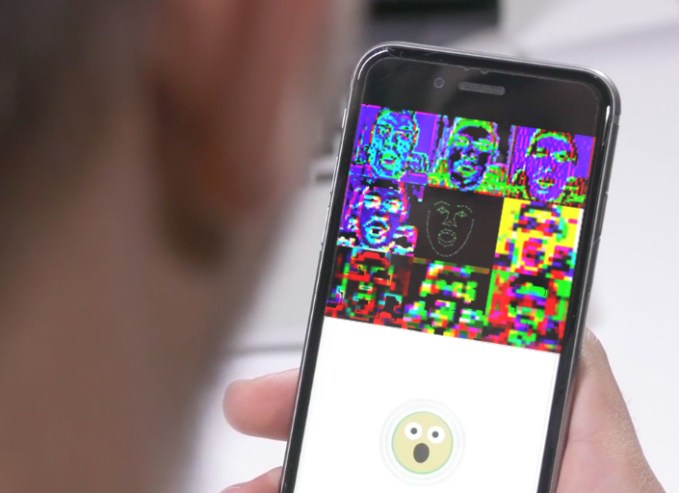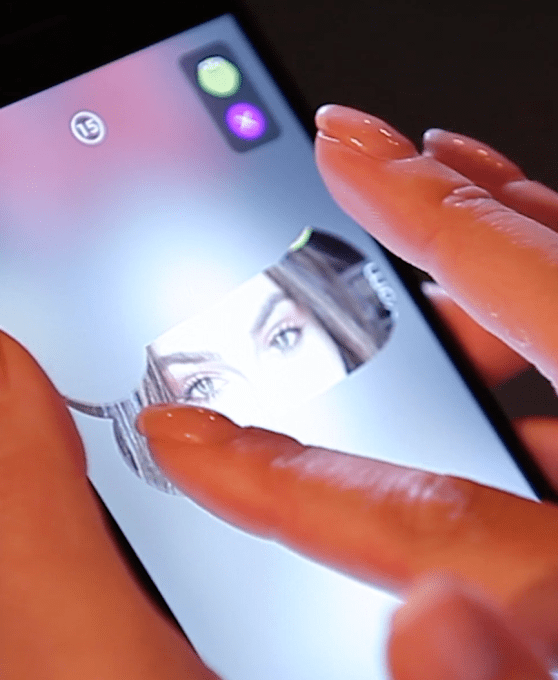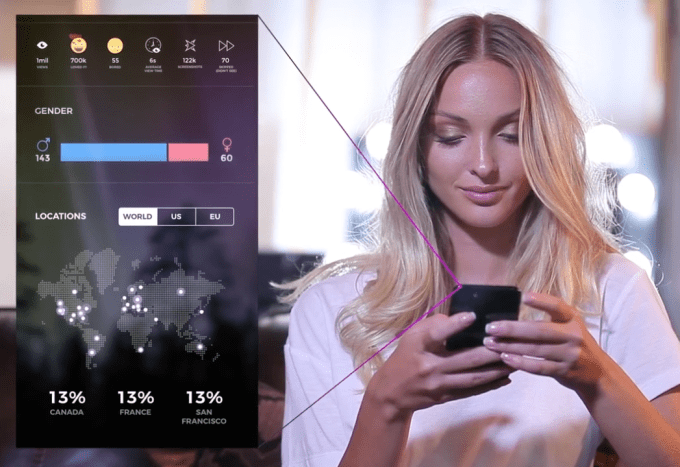What if you could see if your Instagrams made people happy, surprised or disgusted? That’s just one of the innovative features of new photo-sharing social network Polygram. Using facial detection, Polygram gives you analytics about the emotional reactions people have to the photos you post.
Polygram also has augmented reality makeup that lets you look more attractive instead of just silly like with masks in other apps. Plus, it’s developed a smart method of preventing screenshots where you can cover your photos like a fogged-up window, and people may only wipe clean a portion of the screen at a time.
After raising $2.1 million in seed funding, today Polygram launches its iOS app with dreams of usurping Instagram and Snapchat.

It will be a tough uphill climb, especially if the social giants copy Polygram’s emotion detection and other cool features. But co-founder Faryar Ghazanfari thinks it can grow by attracting users who want to A/B test their social media with Polygram’s facial analytics to pick what to post elsewhere.
“Influencers and content creators are the oxygen in this ecosystem,” Ghazanfari tells me. “We have white glove service for influencers, with full-time employees that just create custom features for them.” If the app can deliver enough utility and views, he thinks people might start purposefully sharing on Polygram too.
Smile to like
I met Ghazanfari at TechCrunch’s annual summer August Capital party. He asked about a story I wrote about Facebook acquiring a company called FacioMetrics that had researched letting you Like photos by smiling, then claimed his fledgling startup Polygram had actually built that. The demo was impressive.
With just a minimal 20 milliseconds of lag, Polygram shows a wireframe mirror of your face that recognizes a wide variety of emotions corresponding to different emoji. It relies on an artificial intelligence convolutional neural network to detect how your face moves and map it to a specific emotion. As I smiled, frowned and raised my eyebrows, Polygram accurately surfaced the related emoji.

This tech is the basis of Polygram’s Instagram-ish social network. When sent a private message, you can respond with a face-triggered emoji reaction. And when you post a photo, you’ll see the emotional response tallies of your audience, though without names attached so you can’t get mad at a friend for looking grossed-out by your selfie. You also can see exactly where around the world your viewers are, and get audience breakdowns by demographic if you only care how a certain gender feels about your post.
 Some extra features include the ability to post permanent or ephemeral photos and videos, with the option to make a disappearing image everlasting after you post it. There are the typical Snapchat-style face filters, but there also are more subtle ones designed to beautify you like Meitu instead of making you puke rainbows or look like a puppy.
Some extra features include the ability to post permanent or ephemeral photos and videos, with the option to make a disappearing image everlasting after you post it. There are the typical Snapchat-style face filters, but there also are more subtle ones designed to beautify you like Meitu instead of making you puke rainbows or look like a puppy.
Perhaps the savviest feature, and the one I almost hope Snapchat or Instagram copies, is Polygram’s “wipe-to-reveal.” It lets you choose to protect your private messages from screenshots.
When delivered, your friend will see a blurry image as if was behind a condensation-covered window. By wiping a finger over the photo, they clear the fog and are shown what’s underneath. But the fog quickly reappears, so only a swath of the photo is visible at a time. With enough wiping, you’ll see and remember the whole image piece by piece, but if you try to screenshot or take a photo with a second camera, only the currently visible section will be recorded. Plus, you’ll be alerted if they screenshot it, and get sent a copy of what they captured.
Boostrapping a social graph
Starting a new social network from scratch is incredibly difficult. People have already made their connections on Facebook, Instagram, Snapchat and Twitter. They loathe the chore of rebuilding this graph, posing a stiff challenge for Polygram.
 Ghazanfari hopes to overcome this by recruiting influencers who’ll bring their own audiences with them. He says it’s already signed up a bunch who’ve been helping it refine Polygram’s features, and it wants to give them personal attention that Snapchat has notoriously denied to social media stars. “And in terms of monetization, we put these guys ahead of ourselves,” Ghazanfari declares.
Ghazanfari hopes to overcome this by recruiting influencers who’ll bring their own audiences with them. He says it’s already signed up a bunch who’ve been helping it refine Polygram’s features, and it wants to give them personal attention that Snapchat has notoriously denied to social media stars. “And in terms of monetization, we put these guys ahead of ourselves,” Ghazanfari declares.
But Polygram will have to sign up plenty of users to watch these web celebs, since they’ll only invest time in a platform that grows their fan base. Even with all its snazzy features, that may prove very tough, especially without much funding for traditional marketing.
Still, if Polygram’s app fails to gain mass traction, I’d bet its slick interface ideas will live on, whether it’s copied or acquired by the social juggernauts.
